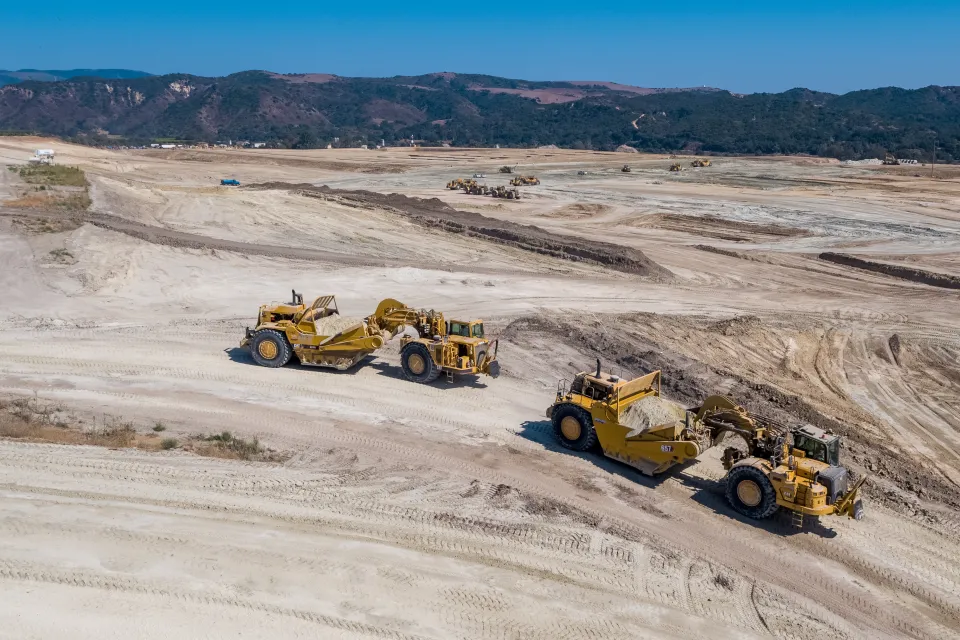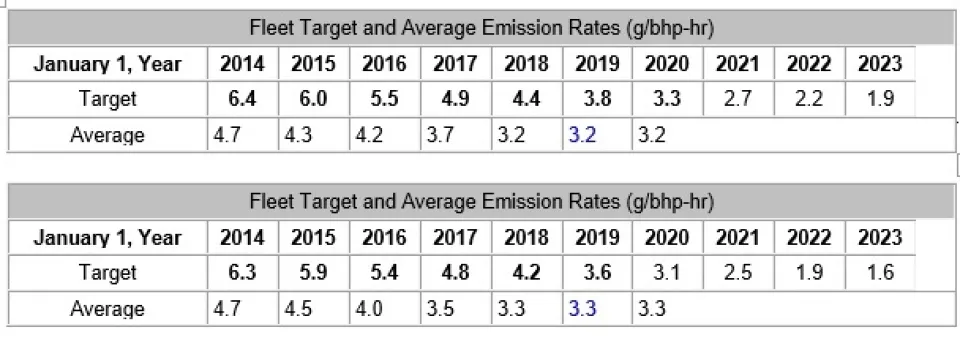Off-Road
Your Off-Road Checklist

Tier 0.
NO fleet may add a vehicle with a Tier 0 engine to its fleet.
Tier 1.
NO fleet may add a vehicle with a Tier 1 engine to its fleet.
Tier 2.
Beginning January 1, 2018, for large and medium fleets, and January 1, 2023, for small fleets, no fleet may add a vehicle with a Tier 2 engine to its fleet. The engine Tier must be Tier 3 or higher.
Fleets are allowed to continue operating lower tiered vehicles that they already own, but must comply with the adding vehicle requirements when considering purchases of new or used vehicles.
EMISSIONS PERFORMANCE REQUIREMENTS
Large Fleets had until July 1, 2014 to meet the performance requirements originally scheduled for January 1, 2014. Annually hereafter, Performance and Compliance dates will revert to January 1.
Medium Fleets compliance date is January 1, 2017
Small Fleets January 1, 2019
Fleet owners should check their Compliance Snapshot on the CARB DOORS web site to determine whether the fleet meets CARB target emissions for the given year.
To meet annual emissions performance requirements, fleets must either (1) meet the fleet-average emissions targets, or (2) meet the Best Available Control Technology (BACT) requirements. In general, if a fleet does not meet the fleet-average emissions targets, then it must apply BACT each year on a certain portion of its fleet until it does meet those targets. In order to meet BACT requirements, fleets can either: (1) turn over to newer, cleaner engines or vehicles, or (2) install ARB-verified exhaust retrofits. (Note: Exhaust Retrofits are neither required nor recommended for Off-Road Equipment).
OFF-ROAD REPORTING
For each annual report, fleets must report all changes made to the fleet including updated contact information. Fleet must submit engine hour meter readings for vehicles reported as "Low-Use" vehicles, or vehicles used for agricultural operations 51-99% of the time (if applicable), and submit the Responsible official Affirmation of Reporting (ROAR) form. CARB provides the e-ROAR (electronic ROAR) as a convenience for fleet. For additional guidance on how to submit an annual report, review the DOORS User Guide How to Submit an Annual Report and Electronic ROAR.
Fleets that do not meet the target emissions by December 31 of each year, must retire 10% of fleet's horsepower as it was at Dec. 31. The Permanent Low Use exemption is available to meet the 10% requirement but be careful. Once declared Permanent Low Use, the unit cannot come back into the fleet for normal use. It may only be used for 200 hours per year, and the designation is permanent. Fleets must report Low Use hours annually during the reporting period.
By the years 2023-2024, the accumulated fleet reduction credits for most fleets will have expired. The Target Emissions Levels will drop significantly. Most fleets will have to have a Tier 4 Final engine for every Tier 3 engine in the fleet in order to meet the emissions targets—no Tier 1 or Tier 2 engines can be included in the emissions calculations to meet the requirements. Those older engines will have negative effects on compliance.
UCON and our sister associations are attempting to work with CARB Staff to find some relief from these stringent requirements. At present we are in early stages of discussions. We will provide additional information to our members as the process unfolds.
CURRENT ANALYSIS: OFF-ROAD EQUIPMENT
Off-Road fleet CARB emissions targets in 2023 are substantially lower than today. What this means is that, as turnover credits expire and phase out, fleet equipment inventories must be Tier 4 Final in order to meet the future emissions targets. When CARB implemented the Off-Road regulation in 2007-2008, CARB estimated the Cost of future Compliance at approximately $800M statewide. UCON and CIAQC (our Sister Association) now estimate those costs to be approximately $15B statewide. That's with a "B".
At current production rates, equipment manufacturers will be unable to meet demands for Tier 4 Final equipment, and even if available, the construction industry won't have the necessary money available for purchase, requiring huge debt service. We all know what that does to bonding capacity and internal finances in general.
UCON and CIAQC have had discussions with CARB staff to establish a dialogue and to encourage CARB to re-visit these emissions targets and deadlines. As we have done with the PERP regulation, once CARB understands that the industry simply cannot meet the parameters of the regulation as-is, perhaps changes can be made to soften the future emissions requirements.
Below are emissions graphs from compliance snapshots of two of UCON member fleets. Average is where they are now, and Target is where they must be emissions-wise at the dates indicated. Our message to members is Plan for the Worst and Hope for the Best. Analyze your fleets with a mind to these future emissions requirements and replacement costs.
